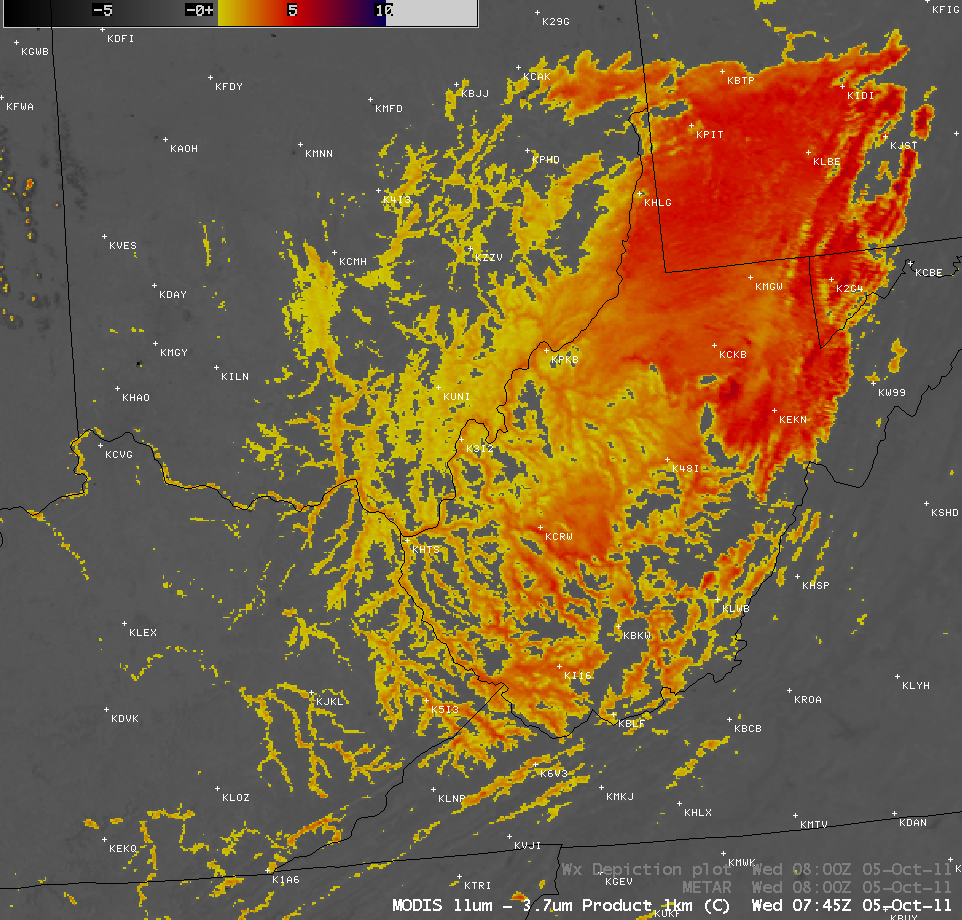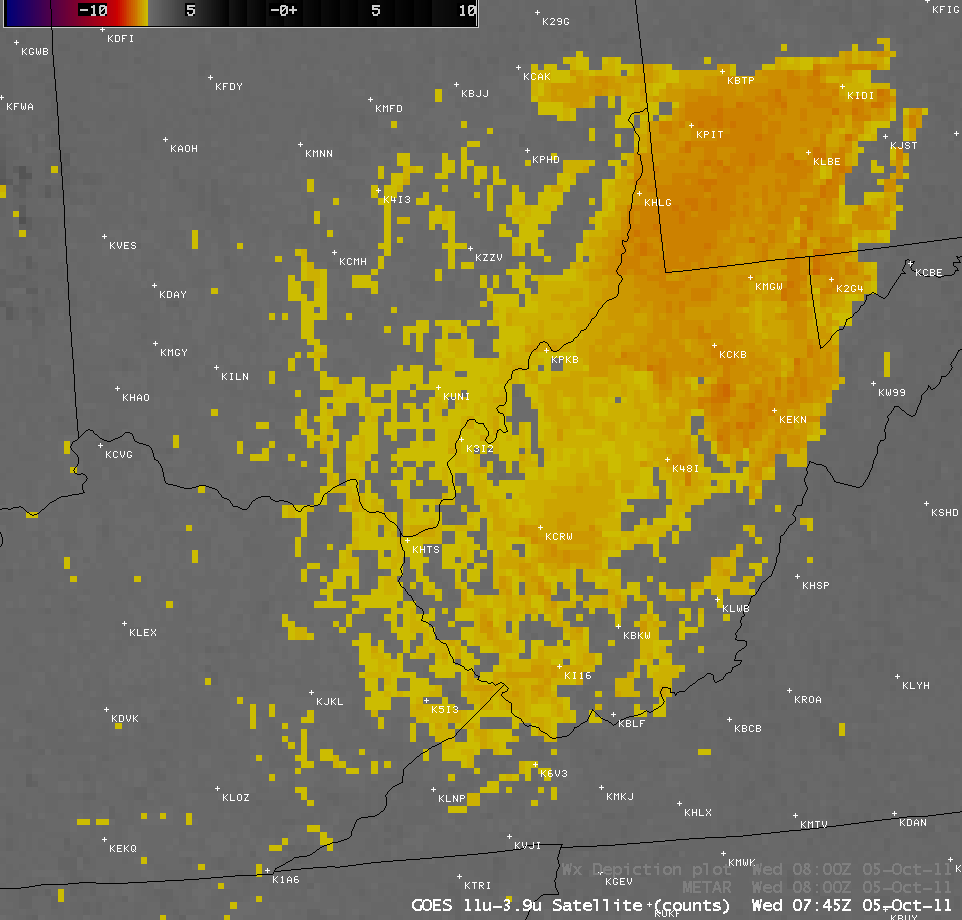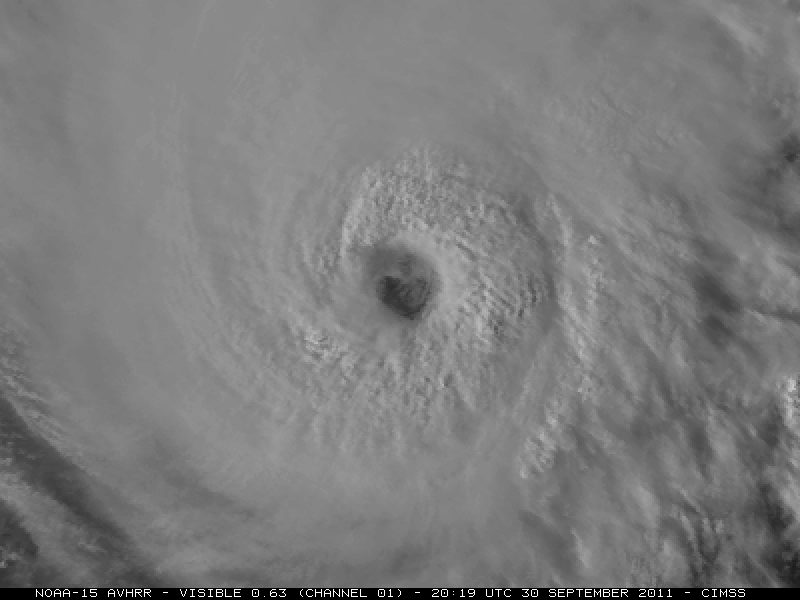As was highlighted in news stories posted by the National Weather Service forecast offices at Chicago and Milwaukee, a large amount of sediment was seen in southern Lake Michigan following a strong wind event which produced very large waves. A... Read More
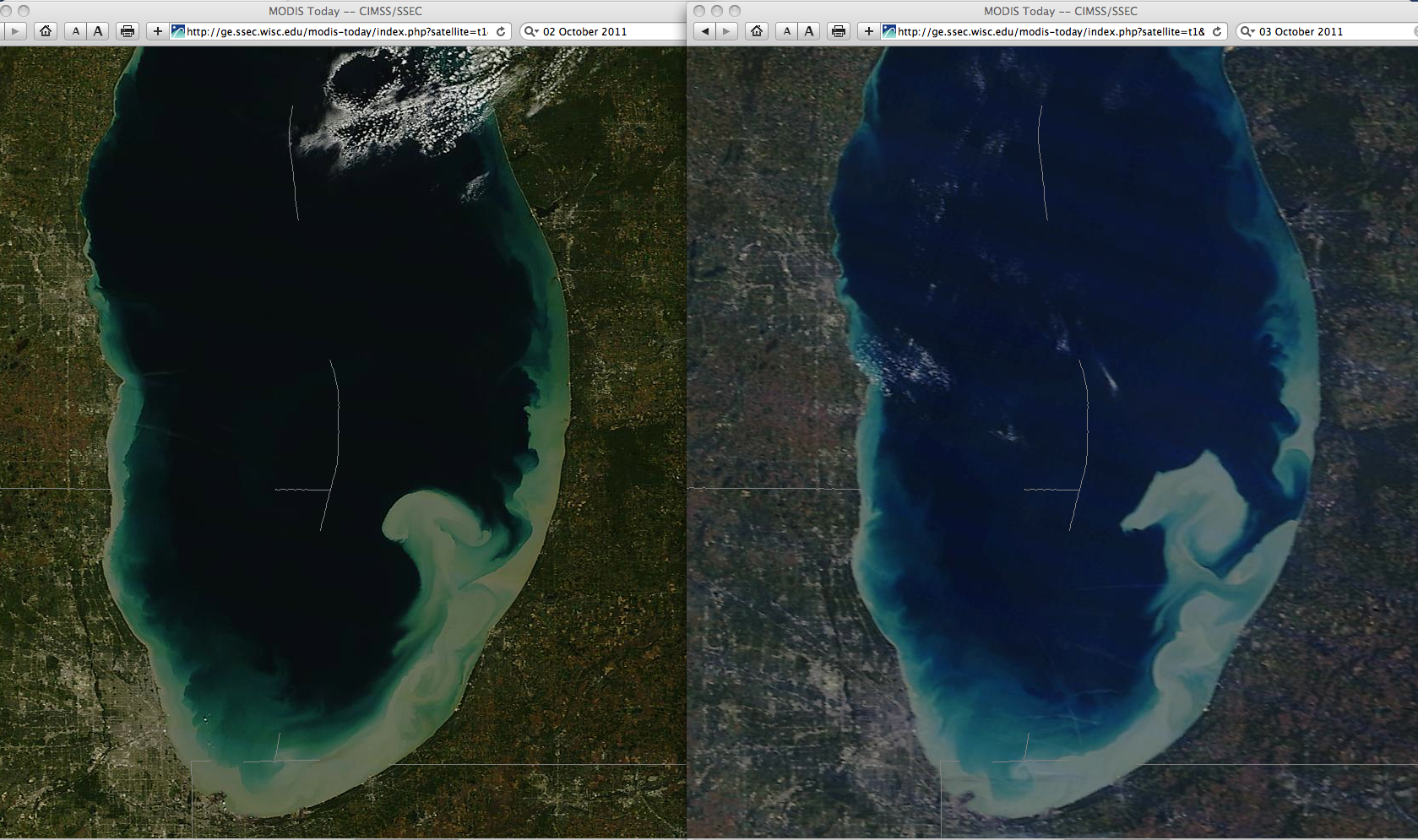
MODIS true color images: 02 October (left) and 03 October (right)
As was highlighted in news stories posted by the National Weather Service forecast offices at Chicago and Milwaukee, a large amount of sediment was seen in southern Lake Michigan following a strong wind event which produced very large waves. A comparison of 250-meter resolution MODIS true color Red/Green/Blue (RGB) images from the SSEC MODIS Today site (above) showed one particularly large sediment feature protruding northward from the southeastern part of Lake Michigan on 02 October and 03 October 2011.
A comparison of AWIPS images of 1-km resolution MODIS 0.65 µm visible channel data with the corresponding 1-km resolution MODIS Sea Surface Temperature (SST) product on 03 October (below) showed that while the prominent sediment feature was embedded within a larger scale area of warmer waters (SST values in the lower 60s F, darker red color enhancement) in the far southern part of the lake, there was not necessarily a 1:1 correspondence between the sediment pattern and the sea surface temperature pattern.

MODIS 0.65 µm visible channel image + MODIS Sea Surface Temperature product
GOES-13 0.63 µm visible channel imagery (below; click image to play animation) indicated that the prominent sediment feature was moving slowly northward early in the day on 03 October — however, once the northwesterly winds reported by the mid-lake buoy began to increase and gust to 16 knots later in the day, the northward motion of the sediment feature appeared to slow somewhat.

GOES-13 0.63 µm visible channel images (click image to play animation)
===== 06 October Update =====
A sequence of daily 250-meter resolution MODIS true color RGB images from 02, 03, 04, 05, and 06 October (below) show the changes in shape and location of the large sediment feature in the southeastern part of Lake Michigan.

MODIS true color images from 02, 03, 04, 05, and 06 October
In addition, daily 15-minute interval GOES-15 0.63 µm visible channel images from that same period (below; click image to play 5-day animation) further show how the sediment patterns were transported and morphed by the Lake Michigan water currents.
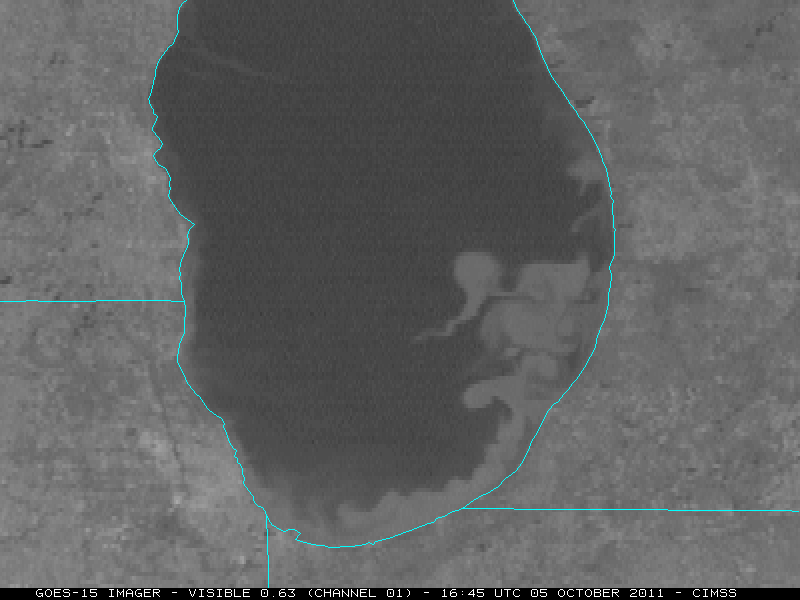
GOES-15 0.63 µm visible channel images (click image to play 5-day animation)
View only this post
Read Less



